Today we’re going on a walking tour of the Old City of Jerusalem with our guide, Reuven.
Some facts from Wikipedia…
- Jerusalem is one of the oldest cities in the world.
- It’s divided into Jewish, Muslim, Christian, and Armenian quarters.
- Jerusalem is holy to three major religions: Judaism, Christianity, and Islam.
- During its long and often contentious history, Jerusalem has been destroyed twice, besieged 23 times, attacked 52 times, and captured & recaptured 44 times.
- The Old City is an UNESCO World Heritage Site and modern Jerusalem has grown far beyond the Old City’s walled boundaries.
- While the Old City is only .35 square miles, it’s home to many sites of seminal religious importance, like the Dome of the Rock, Western Wall, and Church of the Holy Sepulchre, among others.
- In 2011, Jerusalem had a population of around 800,000 — 62% Jewish, 35% Muslim, and 2% Christian.
We start our day at the Dome of the Rock, since lines tend to get backed up at security. That’s the Western Wall in the foreground — we walk up that wooden covered walkway to access the Dome beyond it.

Non-Muslims may visit the Dome of the Rock from 7:30-11:30am (10:30 in winter) and 1:30-2:30pm. We pass through metal detectors and items such as Jewish prayer books are prohibited (more on that in a moment).

The Dome of the Rock sits at the center of a platform known as the Temple Mount. Inside the Rome of the Rock lies the Foundation Stone, which bears great significance for Jews, Christians, and Muslims. This area is maintained by Jordan authorities.
Muslims believe the Dome of the Rock is where the Islamic miracle of the Night Journey of Isra & Mi’raj took place. And it’s considered to be the spot where Prophet Muhammad ascended to Heaven accompanied by the angel Gabriel.
The location is holy to Christians because of the role the Temple Mount played in Jesus’s life.
Jews regard the Foundation Stone as the holiest spot on Earth — it’s where Abraham prepared to sacrifice his son Isaac. Since Muslim authorities refuse to allow Jewish prayer on the Temple Mount, custom developed of praying at the Western Wall, as it is nearest to the Foundation Stone.

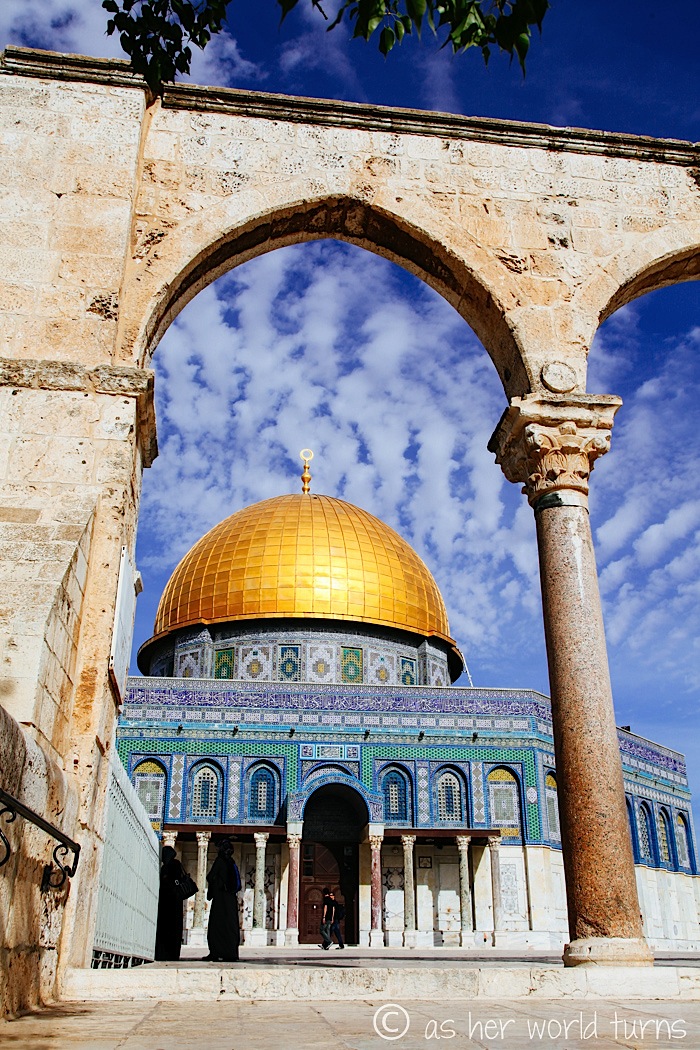

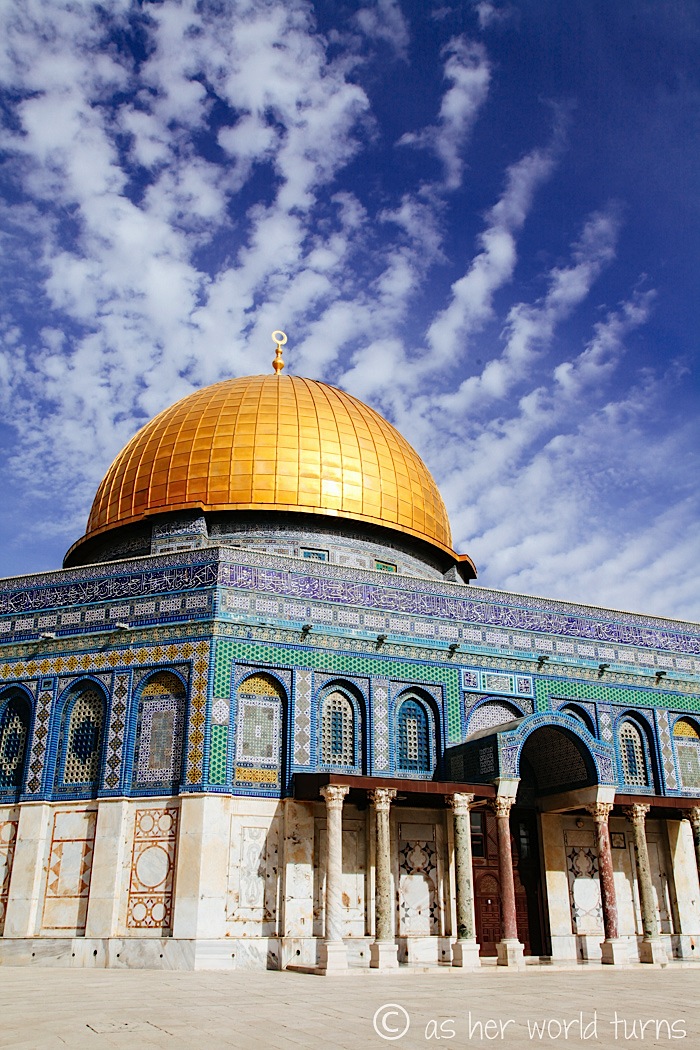


Next Reuven takes us to a quiet rooftop area where he explains more about the history of Jerusalem and its many religious significances.


We’ll get closer to the Western Wall later, but for now it’s neat to see it from this vantage point.

There’s a short wall separating the two sides: men pray on the left and women pray on the right.

Next we explore the Jewish Quarter. It’s quite pretty.



Here’s Reuven, showing off a mosaic map of the Old City.


This painting is called “City Streets — the Cardo in the Jewish Quarter.” Can you identify one part of the painting that’s out of place? Look closely…

There’s a modern kid with a backpack and baseball cap. I’m embarrassed to admit that even up close I didn’t notice this — it blends in well and the painting is enormous.

A few more shots from the Jewish Quarter:
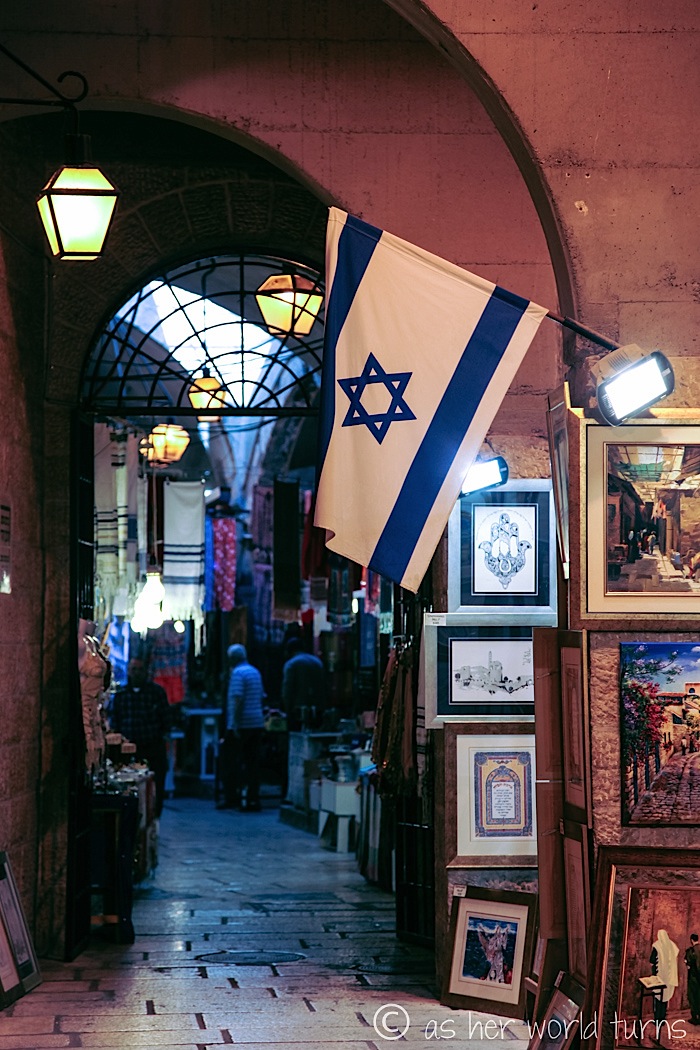

Since Jerusalem has been rebuilt numerous times during its history, this portal offers visitors a glimpse at those previous layers of civilizations.

We have a short time to visit the Western Wall before our tour of the tunnels.
As I mentioned, the Western Wall is at the foot of the Temple Mount / Dome of the Rock. It’s the most sacred site in Judaism outside of the Temple Mount itself, as it’s the closest permitted place to pray.
You can clearly see the short wall diving the men and women below — the men have about twice as much space as the women. There are lots of chairs on the women’s side but very few on the men’s.

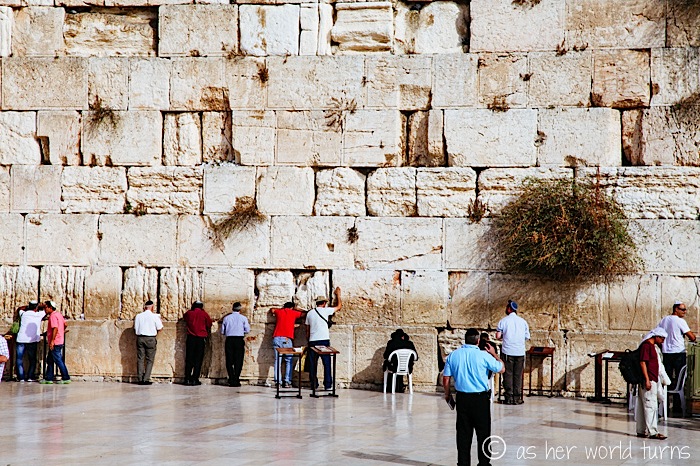
Our guide tells us that it’s customary for those praying not to turn their backs to the wall — once they are done, they walk backwards to exit, like this woman in the photo below:

Thousands of prayers written on scraps of paper are nudged into the nooks and crannies of the wall.


Peeking over the wall towards the men’s side…


Next we make our way around the corner to the entrance of the Western Wall tunnel for our tour. Our guide Reuven arranged this, as timed reservations must be made in advance. I think it’s about an hour long and, honestly, I struggle to pay attention. The tunnel guide is funny but I have trouble understanding his English, plus by this point in the day we haven’t sat down much and my feet are tired. But my sister and uncle really enjoy this tunnel tour, so don’t take my word for it!


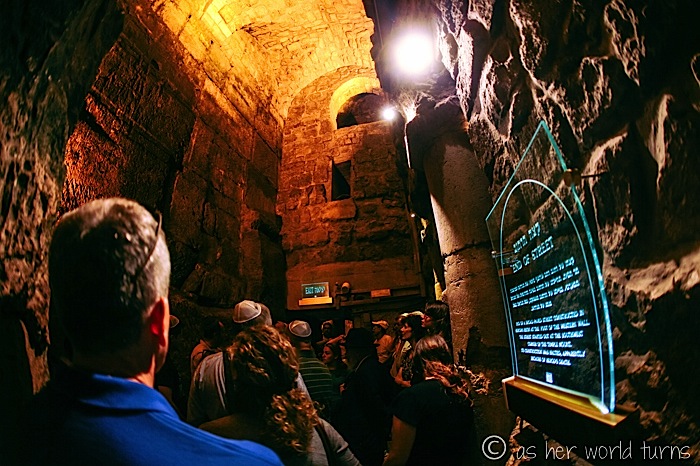

Next we visit the Bethesda Pools and St. Anne’s Church.




We spend the remainder of our afternoon walking the Stations of the Cross which are scattered throughout the Old City. This is the path Jesus walked to his death while carrying the burden of the cross on which he was to be crucified.
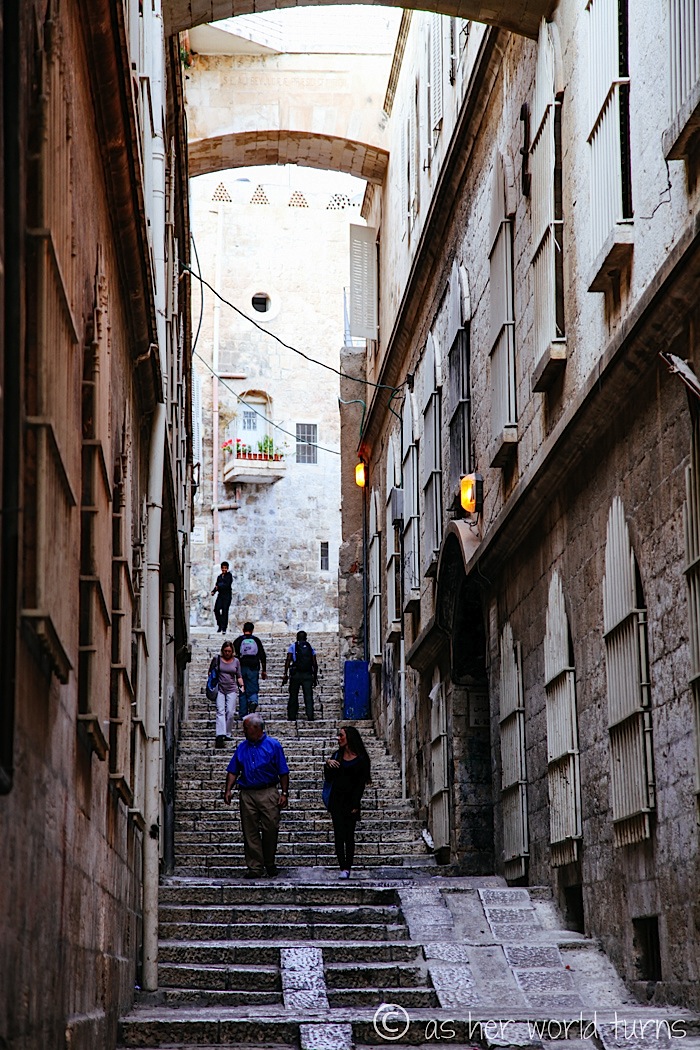

Via Dolorosa is a main street in the Old City where many of the Stations of the Cross are located. This street name also refers to the path Jesus took to his crucifixion and is used interchangeably with Stations of the Cross.

There are 14 Stations of the Cross and we see many visitors walking the entire route, some of them carrying wooden crosses like the one below to symbolically follow in Jesus’s footsteps. The specific Station number is listed in Roman Numerals on or above the door of each stop.



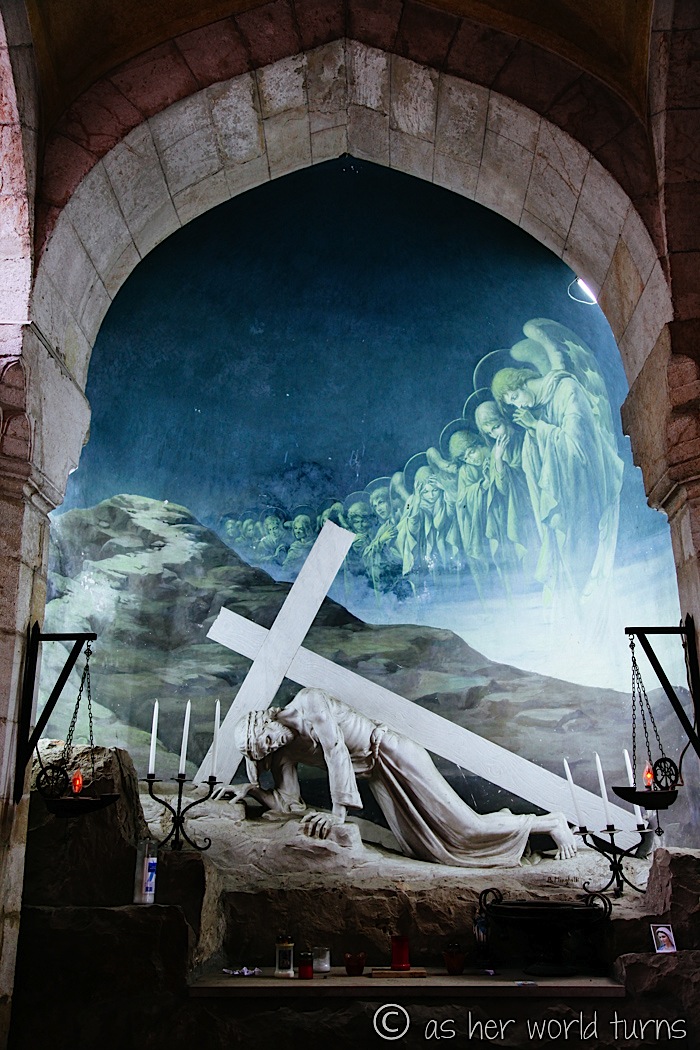
The Church of the Holy Sepulchre in the Christian Quarter is considered by many to be the holiest site in that religion: it’s where Jesus was crucified and later buried. (Like with most historical accounts from any religion, there is some discrepancy over the exact spot of these sites.)


This is the Stone of the Anointing, where Jesus’s body was prepared for burial:

Control of the building is shared between several Christian churches and secular entities in complicated arrangements essentially unchanged for centuries. For example, if one group wants to add a candle, all of the others have to agree before it can happen. Our guide Rueven tells us that a local family (not working on behalf of any of these religions) is trusted to hold the keys and open / close the church each day.
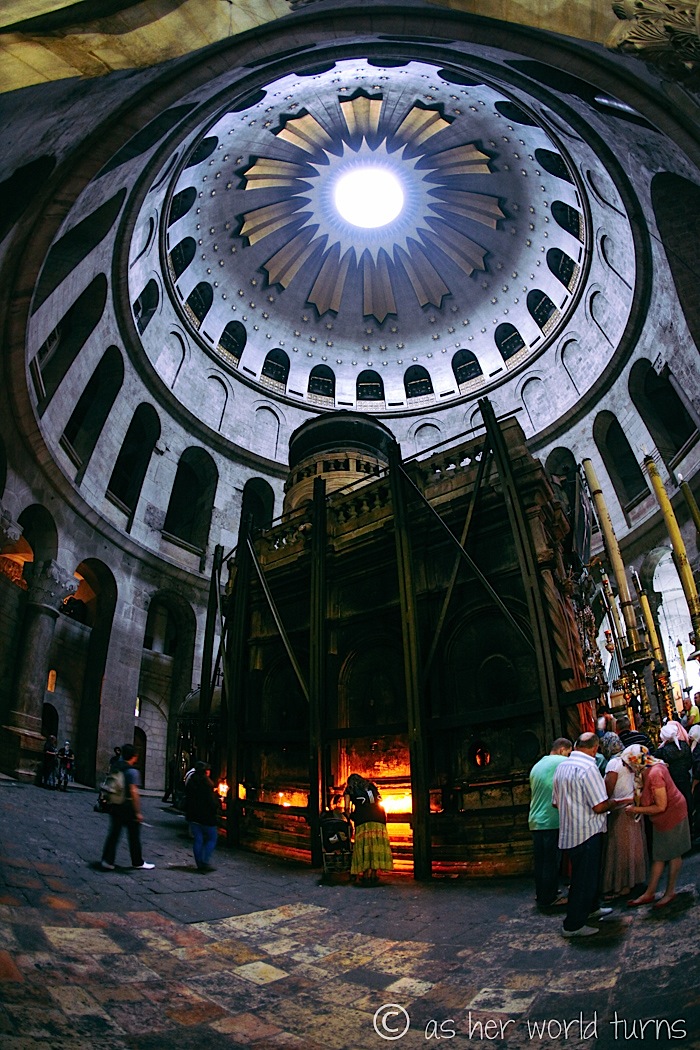
This is the Holy Sepulchre, where Jesus was buried.

There’s a Catholic chapel just behind the Holy Sepulchre:

This is the Syrian Chapel just off the main artery of the church.


This wraps up our well-informed tour of the Old City of Jerusalem. Tomorrow I’ll share photos of this area by night, as well as image from the first night of Hanukkah, which happens to coincide with our visit.

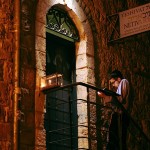
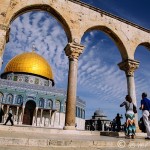
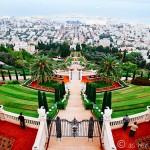
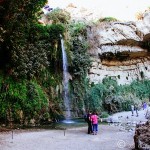


This is fascinating. I love religious history! I didn’t know much about this. How neat to see all the faiths intertwined like that in one place.
Yes such a unique meeting of religions in one place. Walking around the Old City feels like stepping back in time. Incredible place.